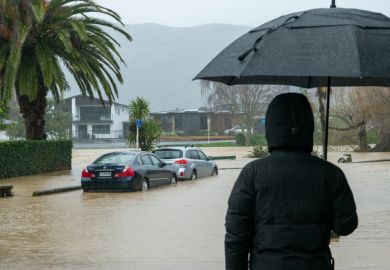New Zealand’s government has announced a NZ$128 million (£62 million) bailout for the country’s universities, following warnings that proposed cuts could set the sector back years.
The extra money will fund a 4 per cent boost to degree-level teaching subsidies in 2024 and 2025, on top of the 5 per cent increase announced in the May budget. The government has also foreshadowed a review of higher education funding.
“The government has heard the concerns of the sector,” education minister Jan Tinetti said in a statement. “When we began our budget process, universities and other degree providers were forecasting enrolment increases.
“The opposite has occurred, and it is clear that there is a need for additional support. It will not resolve all the issues that universities are facing, but it should make a positive difference.”
Finance minister Grant Robertson said the extra money would come from “underspends” in the education portfolio after enrolments proved lower than predicted. The government has taken similar measures in the past, including when demand under the fledgling “fees-free” scheme failed to match expectations.
The Tertiary Education Union congratulated the government on its “good call” but said permanent solutions were needed. “We are cautiously optimistic that this will be enough to stop the cuts but given it is not targeted at the institutions that are struggling the most, we are concerned the money may be spread too thin,” said national president Julie Douglas.
The government has intervened after 2022 financial accounts released by seven of the eight universities revealed deficits at five of them. The seven converted a combined NZ$228 million surplus in 2021 to just NZ$31 million in 2022, leaving them an average buffer of just 0.7 per cent – well below the 3 per cent margin considered “low risk” by the Tertiary Education Commission.
Revenue rose just 0.7 per cent, with earnings from the main income streams – government grants and tuition fees – falling by 1 per cent and 5 per cent respectively. Meanwhile expenses increased by 6 per cent, fuelled by rises of 4 per cent in staff costs and 8 per cent in operating overheads.
The remaining institution, the University of Waikato, is expected to publish its accounts soon following today’s meeting of its governing council.
Analysts blame the sector’s financial woes on government funding which has failed to keep pace with universities’ costs for at least a decade. While the originally promised 5 per cent increase to subsidies in 2024 was well above the previous years’ rises, it nevertheless fell short of inflation.
Meanwhile, increases to tuition fees – which are tightly controlled by the government – were limited to 1.7 per cent in 2022 and 2.75 per cent in 2023.
Current university cost-cutting plans would wipe out well over 700 jobs in a sector employing some 30,000 people. Victoria University of Wellington (VUW) and Auckland University of Technology have proposed around 490 job cuts with another 45 positions reportedly slated to go at Massey University and the University of Waikato, and several hundred at the University of Otago.
Analysts appear even more concerned at some of the possible course cuts, which target core professions and underpinning disciplines.
For example, VUW proposes to discontinue secondary school teaching and accept no new enrolments in master’s and graduate diploma teaching courses, among 14 offerings to be scrapped or scaled out, with another 59 academic programmes – including physics, chemistry, statistics, economics and public policy – under review.
Register to continue
Why register?
- Registration is free and only takes a moment
- Once registered, you can read 3 articles a month
- Sign up for our newsletter
Subscribe
Or subscribe for unlimited access to:
- Unlimited access to news, views, insights & reviews
- Digital editions
- Digital access to THE’s university and college rankings analysis
Already registered or a current subscriber?












